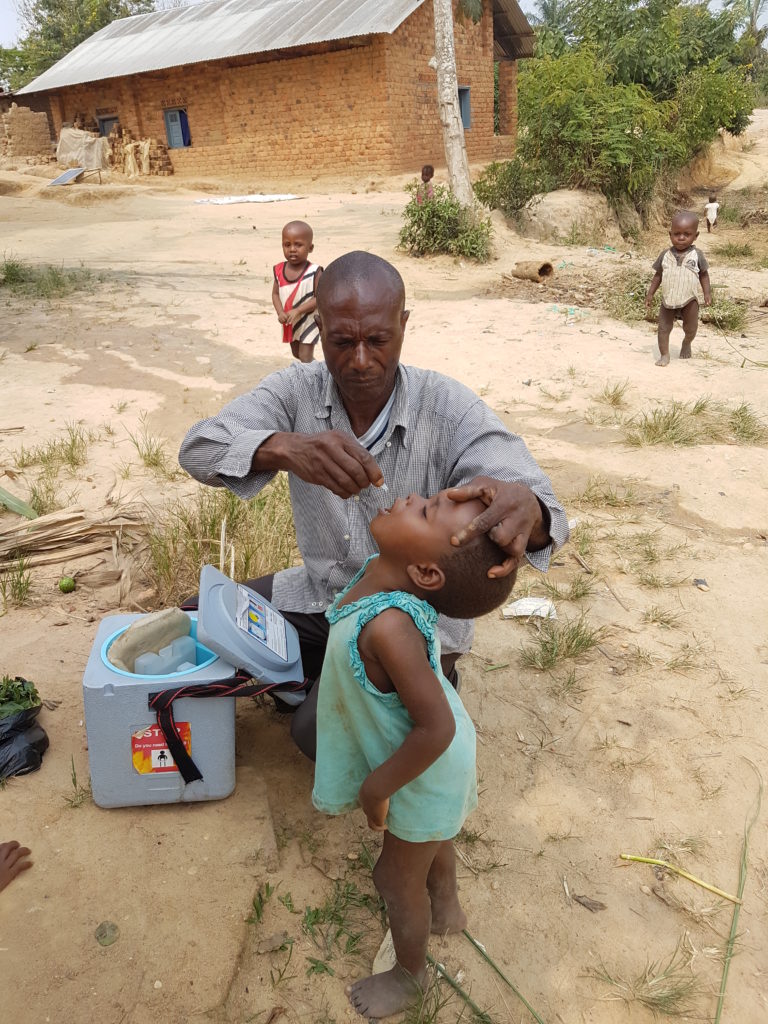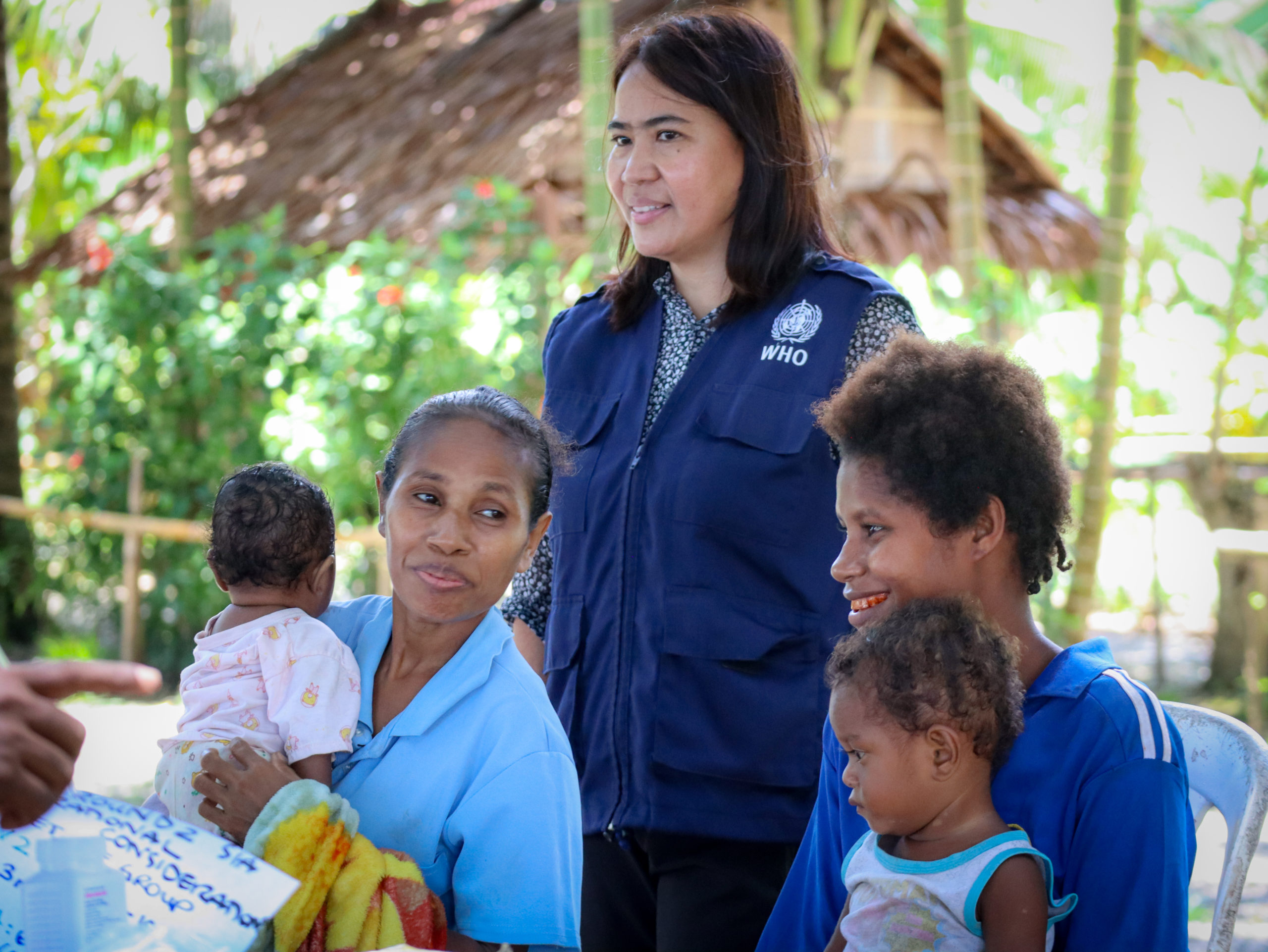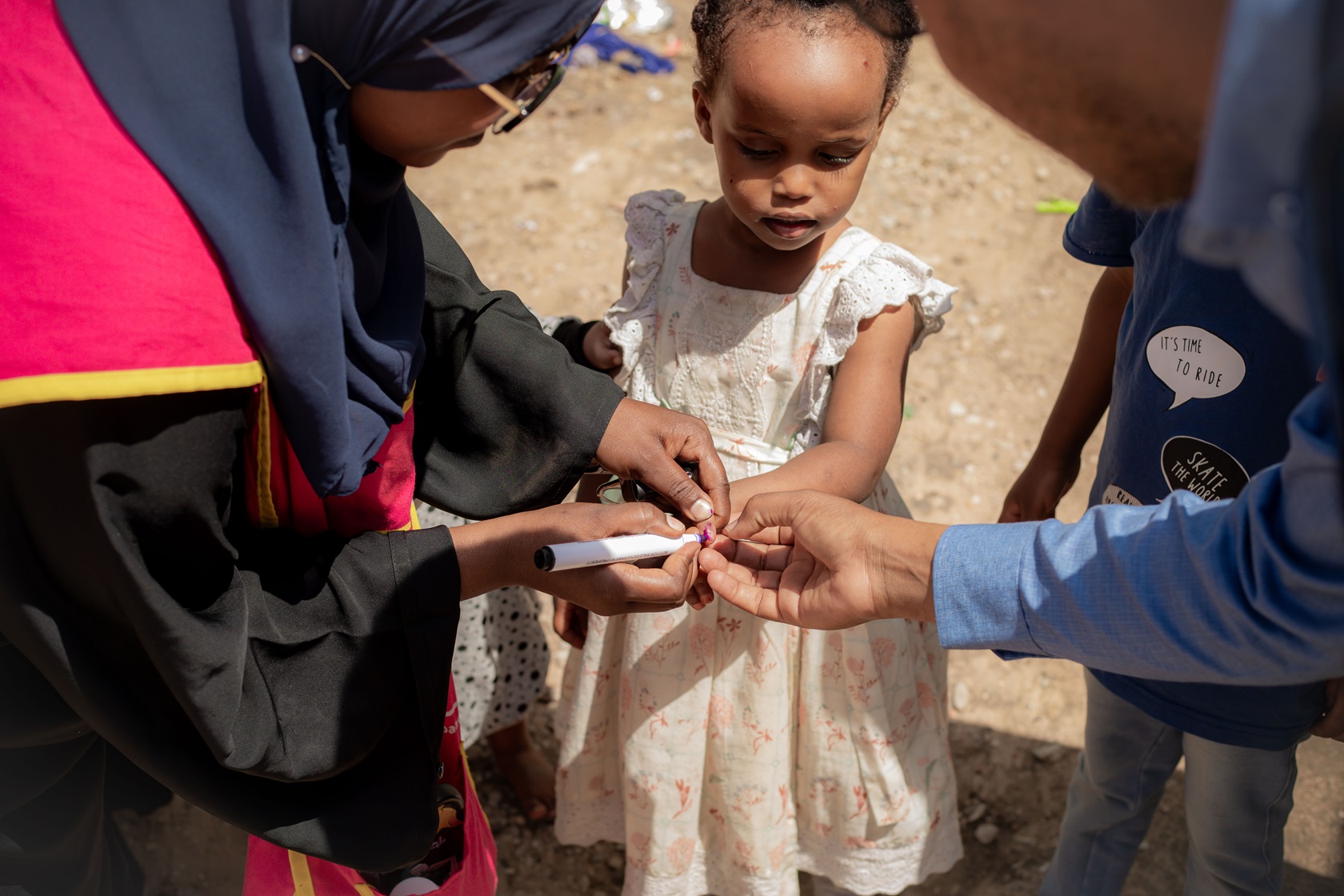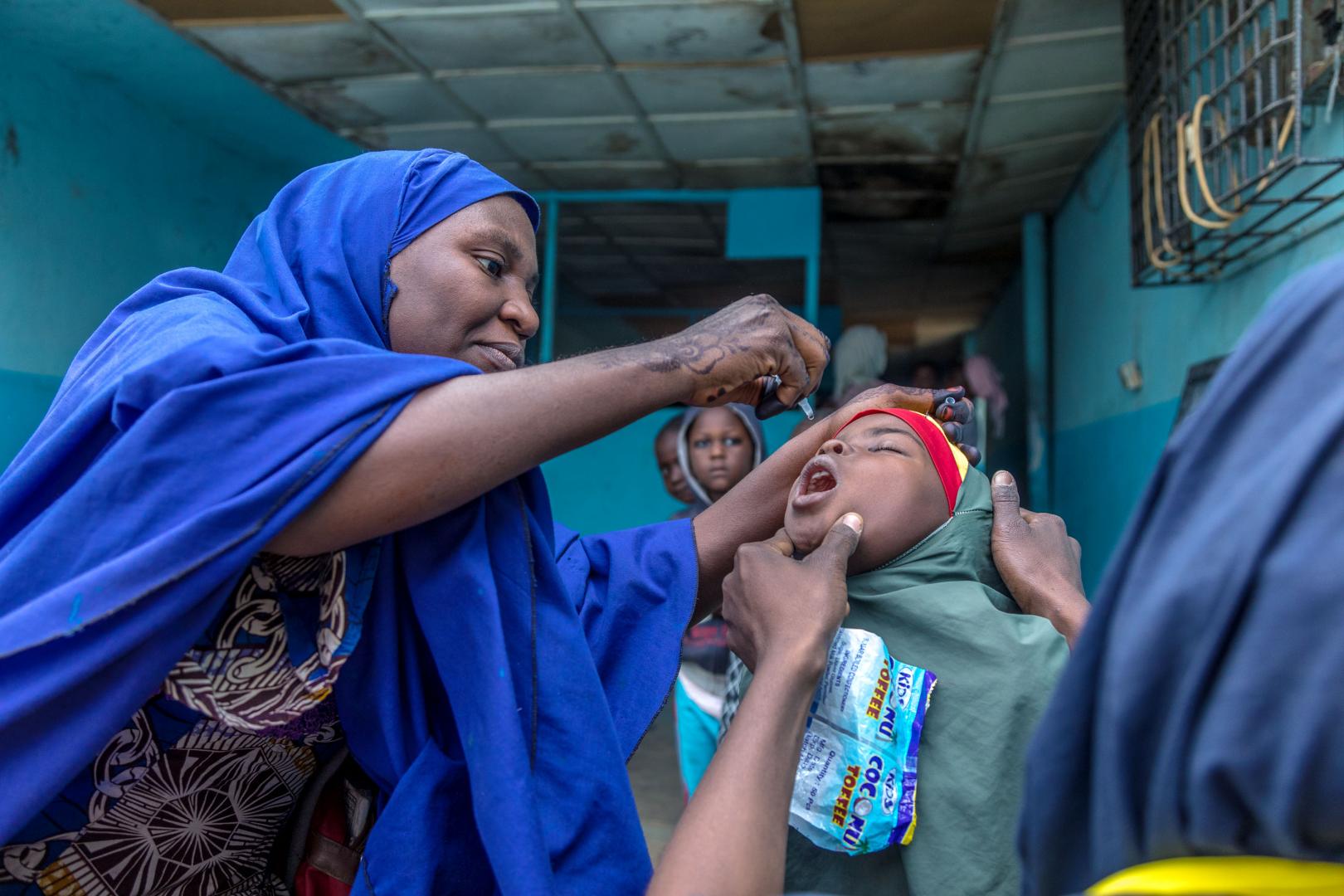
This little girl is Kapia. She lives in a small village, surrounded by jungle, in a remote part of the countryside. There are no medical doctors in her village. The nearest clinic is hundreds of kilometres away. And she has just received two drops of polio vaccine, protecting her from the potentially paralytic disease.
A few days ago, health workers arrived in her village with one simple goal – to immunize every child under five against polio. Kapia’s village is one of many hundreds of settlements, villages, towns and neighbourhoods that will be visited by vaccinators with this same simple goal, to reach every child with the polio vaccine.
While the goal is simple, achieving it is much more complex. Vaccination campaigns need to reach hundreds of thousands of children over large areas of land, often involving difficult environmental, cultural and political challenges. A huge amount of detailed information gathering and planning is needed to ensure every piece of the campaign puzzle is first discovered and then analysed and slotted in to place to ensure every child is immunized against the disease.
Enter the microplan.
The foundation of every successful vaccination campaign is a comprehensive microplan, which captures in great detail all the different, yet interrelated components of the campaign.
The first piece of the microplanning puzzle involves discovery – finding out about communities in the vaccination area, how many children live in in the area, and where they are located. This informs a range of other planning and logistical elements of the campaign.
Health workers use a wide variety of resources to gather the most accurate and detailed information possible about communities, to make sure all children are reached with the vaccine. This includes working with the communities themselves, as well as NGOs on the ground and government to make sure even the most remote settlements and hard to reach children are reached in the vaccination campaign. This must take into account groups that are mobile, such as nomads, the internally displaced, or migrant workers’ families. Where are these groups, how many children do they have who need vaccine, what are the routes they use and the transit points through which they pass?
When all these puzzle pieces have been revealed, health workers can start putting them together, building on each piece of information to create the whole microplan picture – a comprehensive and detailed plan for the campaign.
In the microplan, every community is listed, along with estimated number of children, and important areas in each community where children can be reached: whether playgrounds, water collection points, markets or government clinics. Communities are also plotted on maps, along with distances, population spread, landmarks, population movements and seasonal and environmental specifics, such as floods and challenging roads.
This information is also used to calculate the amount of vaccine needed for the campaigns, the logistics for getting the vaccine to where it needs to go, and the number of health workers, vaccination teams and supervisors needed to carry out the work.
Once all of this is established, vaccinators can be identified who are appropriate for that community, and detailed activity plans can be created, allocating vaccination teams to cover specific mapped areas on specific days. Special plans are also made for vaccination teams to vaccinate at major transit points, and to cover hard to reach populations, such as nomadic populations or people living in areas with disputed borders.
Each team is provided with a team microplan, which includes the number of houses and children to be reached, and a detailed description and map of each area to be covered including start point, route to be taken, end point, important landmarks and special sites, like schools and playgrounds, that should be covered to ensure all children receive the vaccine. This functions as a systematic guide to vaccinators as they carry out their work.
Other detailed plans are made covering vaccine distribution and logistics, social mobilization and communications plans, and reporting plans.
Slotted together, every small piece of information and planning combines to give a highly detailed picture of the forthcoming campaign, leaving no situation to chance or guesswork. This ensures every child like Kapia, no matter how remote or hard to reach, receives the protection they need against polio.



